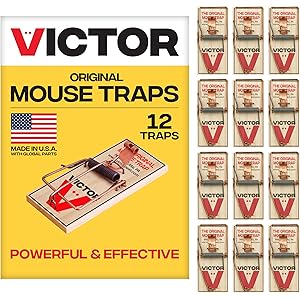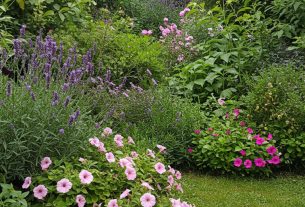As a passionate gardener, I often find myself pondering the potential of my gardening space. One of the most common questions I hear from fellow gardening enthusiasts is, “How many vegetables can I grow in a 3×6 raised bed?” The answer isn’t just about numbers; it encompasses a world of strategies, planning, and passion for cultivating fresh produce. In this article, I will share my insights, tips, and personal experiences to help you maximize your 3×6 raised bed and achieve gardening success.
Understanding the Dimensions: What Can Fit in a 3×6 Raised Bed?
To kick things off, let’s break down the dimensions of a 3×6 raised bed. A raised bed that is 3 feet wide and 6 feet long provides an area of 18 square feet. This space can accommodate a variety of vegetables, but the actual number will depend on several factors:
- Vegetable Types: Different vegetables require varying amounts of space. For instance, larger plants like tomatoes and squash will need more room than smaller plants like radishes and lettuce.
- Spacing Recommendations: Each type of vegetable has its own recommended spacing. For example, tomato plants typically need about 24-36 inches apart, while lettuce can be spaced 6-12 inches apart.
- Growing Methods: Utilizing different growing techniques, such as vertical gardening or companion planting, can significantly increase your yield.
Calculating Planting Density: A Closer Look
Understanding how many vegetables I can grow in my raised bed starts with calculating the planting density. Here’s a breakdown of some common vegetables and their recommended spacing:
| Vegetable | Spacing (inches) | Plants per 3×6 Bed |
|---|---|---|
| Tomatoes | 24-36 | 2-4 |
| Carrots | 2-4 | 36-54 |
| Lettuce | 6-12 | 18-36 |
| Peppers | 12-18 | 8-12 |
| Radishes | 2 | 72 |
| Spinach | 6 | 36 |
As I calculated, the number of plants I could fit in my raised bed varied widely depending on the types of vegetables I chose and their spacing needs. This table serves as a guideline, but I’ve learned that experimentation is key. Some plants thrive better when spaced a bit closer, while others need that extra elbow room to flourish.
Maximizing Your Space: Techniques for Success
Now that we have a grasp on the numbers, it’s time to explore some techniques that can help maximize the use of my 3×6 raised bed:
1. Vertical Gardening
Vertical gardening is an excellent way to increase the number of vegetables I can grow without expanding my bed. By utilizing trellises, cages, or stakes, I can grow climbing plants such as:
- Beans
- Cucumbers
- Peas
- Tomatoes
Not only does vertical gardening save space, but it also improves air circulation and reduces the risk of disease.
2. Companion Planting
Companion planting is another strategy I often employ. By planting certain vegetables together, I can enhance growth, deter pests, and maximize my harvest. Here are some examples of effective companion pairings:
- Tomatoes and Basil: Basil can enhance the growth and flavor of tomatoes while repelling harmful insects.
- Carrots and Onions: These two can help each other thrive while deterring pests.
- Spinach and Strawberries: Spinach can provide shade for strawberries, helping them thrive during hotter months.
3. Succession Planting
Succession planting is a method I find particularly rewarding. Instead of planting all my crops at once, I stagger my planting times to ensure a continuous harvest throughout the growing season. For example:
- Planting lettuce every two weeks for a steady supply.
- Following early crops like radishes with late-season crops such as kale.
This approach not only maximizes the yield from my raised bed but also keeps my gardening experience fresh and exciting.
Seasonal Considerations: What to Plant When
The timing of my planting can significantly impact my garden’s success. Here’s a seasonal breakdown of what I typically grow in my raised bed:
Spring Planting
In early spring, I focus on cool-season crops that thrive in the cooler temperatures:
- Lettuce
- Spinach
- Radishes
- Carrots
Summer Planting
As the weather warms up, I transition to heat-loving plants:
- Tomatoes
- Peppers
- Cucumbers
- Beans
Fall Planting
In the fall, I often plant a second round of cool-season crops or consider overwintering crops:
- Kale
- Garlic
- Onions
By being mindful of the seasons, I can make the most out of my 3×6 raised bed.
Soil and Nutrients: The Foundation of a Thriving Garden
One of the most critical aspects of successful vegetable gardening is the quality of the soil. I’ve learned that investing time in preparing my soil pays off immensely. Here are some steps I take to ensure my soil is nutrient-rich and well-draining:
- Choose the Right Soil Mix: I often use a blend of high-quality topsoil, compost, and peat moss.
- Regular Testing: I test my soil periodically to monitor pH levels and nutrient content, adjusting as necessary.
- Adding Organic Matter: I add compost and organic fertilizers to enrich the soil with essential nutrients.
Watering Wisely: Keeping My Garden Hydrated
Watering is another crucial factor that can make or break my gardening efforts. I’ve discovered that maintaining consistent moisture is key:
- Drip Irrigation: I often use a drip irrigation system or soaker hoses to ensure my plants receive water directly at the roots.
- Mulching: Applying a layer of mulch helps retain moisture and suppress weeds.
- Monitoring Conditions: I keep an eye on the weather and adjust my watering schedule accordingly, especially during hot spells.
Pest and Disease Management: Protecting My Garden
No gardener wants to see their hard work destroyed by pests or diseases. Over the years, I’ve developed a few strategies for keeping my garden healthy:
- Regular Monitoring: I check my plants frequently for signs of pests or disease.
- Natural Remedies: I use insecticidal soap or neem oil to manage pest issues without harming beneficial insects.
- Diversity: Planting a diverse range of vegetables helps prevent pests from establishing themselves.
Harvesting: The Reward for My Hard Work
After putting in all the effort, the moment of harvest is incredibly rewarding. I’ve learned to pick vegetables at their peak ripeness for the best flavor:
- Tomatoes: I harvest them when they’re fully colored and slightly soft to the touch.
- Leafy Greens: I pick leaves as needed to ensure they remain fresh and tender.
- Root Vegetables: I gently loosen the soil around carrots and radishes to ensure they come out cleanly.
Sharing My Gardening Success: Tips for the Community
One of the joys of gardening is sharing my experiences and success with others. Here are some tips I often share with fellow gardeners:
- Start Small: If you’re new to gardening, begin with a small raised bed to avoid feeling overwhelmed.
- Join a Gardening Group: Connecting with local gardening communities can provide support and inspiration.
- Document Your Journey: Keeping a gardening journal helps track what works and what doesn’t, making it easier to improve each season.
Conclusion: Embracing the Journey of Gardening
Growing vegetables in a 3×6 raised bed is not just about the quantity; it’s about the journey, the learning, and the joy of nurturing life. By understanding planting densities, maximizing space, and employing effective gardening techniques, I have successfully transformed my small raised bed into a thriving vegetable garden. I encourage you to take these tips to heart, experiment, and share your gardening successes with others. Remember, every gardener has a unique story to tell, and I would love to hear yours!
FAQs
1. Can I grow flowers in my raised bed along with vegetables?
Absolutely! Many gardeners choose to intersperse flowers with their vegetables. This can attract beneficial insects and pollinators while adding beauty to your garden.
2. How can I prevent weeds in my raised bed?
Weed prevention can be addressed by using mulch, landscape fabric, or regularly hand-pulling weeds. Keeping the soil healthy also reduces weed growth.
3. What should I do if my plants are not growing well?
Assess several factors, including soil quality, watering practices, and sunlight exposure. It may be helpful to test the soil and adjust your care routine accordingly.
4. How often should I fertilize my vegetables?
Generally, I fertilize my vegetables every 4-6 weeks during the growing season, but this can vary based on the plants and soil conditions.
If you found this article helpful and want to stay updated on gardening tips, don’t forget to sign up for our newsletter! Share your gardening journey with friends and on social media, and let’s grow together!
Victor Mouse Traps M150-12, Metal Pedal, Sustainably Sourced FSC Wood, Wooden Mouse Traps, 12 Metal Pedal Traps
$11.99 (as of 13/11/2025 03:49 GMT -03:00 - More infoProduct prices and availability are accurate as of the date/time indicated and are subject to change. Any price and availability information displayed on [relevant Amazon Site(s), as applicable] at the time of purchase will apply to the purchase of this product.)
Sign up for our newsletter and stay up to date with exclusive news
that can transform your routine!




